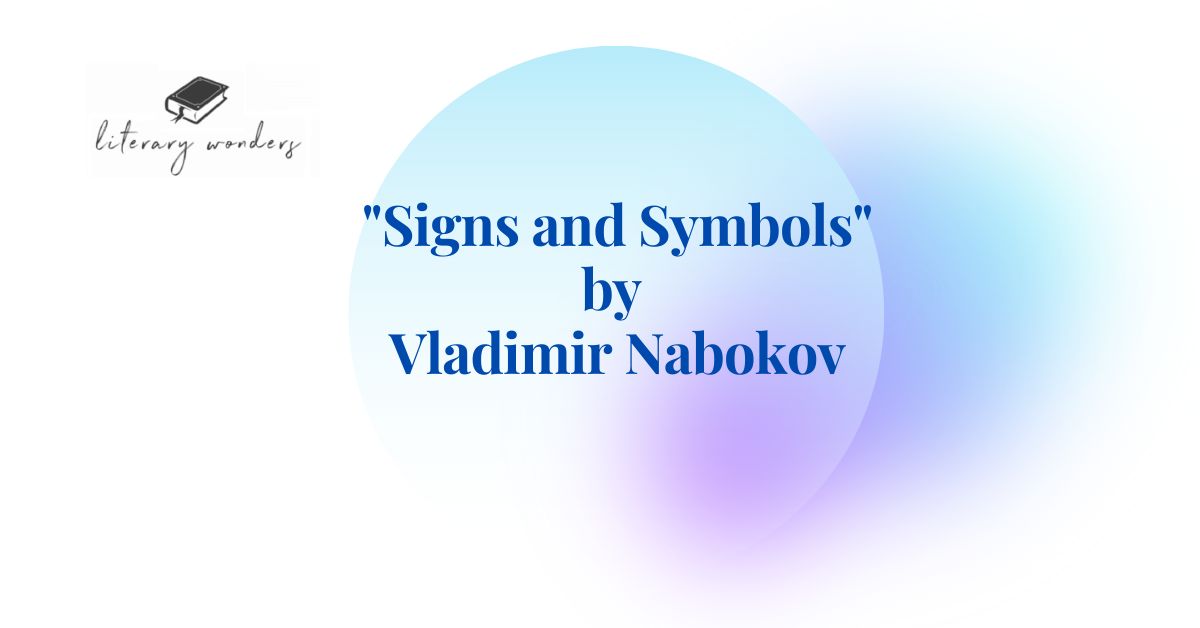Summary of “Signs and Symbols”
Vladimir Nabokov’s short story “Signs and Symbols” revolves around a couple’s attempt to visit their son in a mental institution on his birthday. The story is narrated in a detached, clinical manner, reflecting the emotional distance between the family members.
The son, who is never named, suffers from a severe mental disorder and has been institutionalized for many years. His parents, Russian immigrants living in America, struggle to accept his condition and feel helpless in their attempts to help him.
As the parents prepare for their visit, the father becomes increasingly paranoid and convinced that their journey is dangerous. He obsesses over the possibility of an accident or a fire, convinced that these are signs of impending doom. Meanwhile, the mother is lost in her thoughts and struggles to communicate with her husband.
When they finally arrive at the institution, they find their son has attempted suicide by swallowing a glass. The doctors tell them that he will recover physically but that his mental state will unlikely improve. The parents are devastated, and their thoughts turn to the past when their son was a happy and healthy child.
Throughout the story, Nabokov employs a variety of literary devices to create a sense of ambiguity and disorientation. He frequently uses symbolism to suggest deeper meanings beneath the narrative’s surface. For example, the father’s obsession with signs and symbols can be read as a commentary on the human tendency to search for meaning in an apparently random and chaotic world. Similarly, the son’s suicide attempt can be interpreted as a symbolic act of rebellion against a society that has rejected him.
Structure of the Story
The story is also notable for its unusual narrative structure. It begins seemingly straightforwardly, with a third-person narrator describing the events leading up to the visit. However, halfway through the story, the narrative abruptly shifts to a second-person perspective, directly addressing the son and suggesting that the story’s events are occurring within his mind.
This shift in perspective creates a sense of uncertainty and confusion, blurring the boundaries between reality and fantasy. It also reflects the son’s own experience of living with a mental disorder, where the distinction between the inner and outer worlds can become blurred.
Analysis of “Signs and Symbols”
Vladimir Nabokov’s “Signs and Symbols” is a poignant short story exploring isolation, delusion, and the human psyche. The story follows an elderly couple trying to visit their mentally ill son in a sanatorium on his birthday. However, they cannot see him due to a mysterious incident at the facility. The story is rich with symbols and imagery, and Nabokov expertly weaves these elements together to create a haunting portrait of a family in crisis.
One of the most striking aspects of “Signs and Symbols” is the use of symbols throughout the narrative. The story references birds, numbers, and other images that take on a deeper significance as the plot unfolds. For example, the narrator describes the son’s mental condition as “like a moth caught in the folds of a curtain.” This image suggests a sense of entrapment and confusion, which mirrors the son’s struggle with his own mind. Similarly, the father’s fixation on the number 13 is a recurring motif that hints at his obsessive personality and the doom that hangs over the family.
Another key element of the story is the use of multiple perspectives. The narrative is primarily told from the parent’s perspective. Still, it also includes sections from the son’s point of view and third-person sections that provide context and background information. This shifting perspective creates a sense of unease and disorientation as the reader is forced to piece together the various threads of the story.
Throughout the narrative, Nabokov explores the theme of isolation and how it can lead to delusion and despair. The son is physically and mentally isolated as he is confined to the sanatorium and struggles with a debilitating illness. The parents, meanwhile, are isolated from society and each other, as they have few friends and cannot communicate effectively. This sense of isolation is heightened because the family is Jewish, and the father feels like an outsider in the predominantly Christian society in which they live.
At the heart of “Signs and Symbols” is the theme of communication, or the lack thereof. The son’s mental illness makes communicating with the world around him difficult, while the parents struggle to understand him and each other. This lack of communication ultimately leads to a breakdown in the family unit, as they cannot connect meaningfully. The final scene of the story, in which the son attempts suicide, is a powerful illustration of this theme, as he cannot express his pain in any other way.
Conclusion
In conclusion, “Signs and Symbols” is a masterful short story that delves into the complexities of the human psyche. Nabokov creates a haunting portrait of a family in crisis through symbols, shifting perspectives, and exploration of themes such as isolation and communication. The story’s ending is both heartbreaking and thought-provoking, leaving the reader to ponder the nature of mental illness and the challenges of human connection.
Suggested Readings
Analysis of “An Occurrence at Owl Creek Bridge” by Ambrose Bierce

